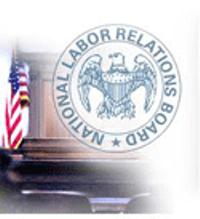
By Michael Burns, courtesy of SBAM Approved Partner ASE
The National Labor Relations Board (NLRB) General Counsel continues to drive a stake into those radical rule changes handed down over the past ten years with a new memo outlining how rules will be interpreted as permissible or impermissible under the National Labor Relations Act (NLRA).
One of the first things to know is that the NLRB considers employee handbook policies the same as employer “work rules.” Therefore, the use of the terms “rules” or “policies” is pretty much interchangeable.
The NLRB’s General Council December 2017 memo rescinded many of the NLRB’s Obama-era changes to employer work rules and policies. In addition, the NLRB’s recent Boeing (2017) decision overturning the Lutheran Heritage (2004) decision regarding work rules and their impact on concerted activities (Section 7) led to these changes.
Using the new rule/policy review construct laid out in the Boeing case, employer rules must be weighed against the impact on the employees right to engage in protected concerted activity (union organizing) and the employer’s right to manage its operation. The General Counsel analyzes more than a dozen of the common work rules typical of most organizations and in most handbooks that were challenged under the Lutheran Heritage decision and the Obama-era NLRB. The rules were looked at through three different categories:
- Rules that are legal in all cases, because they can’t be reasonably interpreted to interfere with workers’ rights or because any interference is outweighed by business interests
- Rules that are legal in some cases depending on their application
- Rules that are always illegal, because they interfere with workers’ rights in away not outweighed by business interest
Category 1 Rules
The new memo places nine employer rules in the first category of “rules that are legal in all cases” unless superseded by special circumstances “due to a unique industrial setting, the history of the rule’s application, or direct evidence of employee chill.” These are:
- Rules against “insubordination, noncooperation, or on-the-job conduct that adversely affects operations” [also called civility rules] should be legal in part because “employees would not usually understand such rules” as blocking NLRA-protected activity. “Disruptive behavior rules,” such as those barring “boisterous” conduct or “disturbances” on company premises, are presumably legal, because workers would read them to block bad behavior but not strikes, which are protected.
- Rules that protect confidential, proprietary or customer information and rules against defamation are most always within the purview of the employer.
- Rules that prohibit photography and recording now fall back into this category and may be prohibited. Though photography or recording may have a chilling effect on working conditions, the existence of such a rule for purposes of security, protection of property, and proprietary or confidential information outweighs the employee’s rights potentially being interfered with.
- Rules prohibiting the unauthorized use of company logos, trademarks which is also considered intellectual property are now legal.
- Rules requiring company authorization for the right of employees to speak on behalf of the company to the media are once again permissible.
Category 2 Rules
Determining whether the rules that fall into the second category are legal or not requires balancing between whether the employer’s business interest in having the rule outweighs the impact on the workers’ rights to engage in protected concerted activity, or whether the employer could accomplish what the rule intended with a more narrowly written rule.
The types of rules that fall into the second category of rule types are:
- Overbroad confidentiality rules
- Rules banning certain off-duty conduct
- Rules regarding disparagement or criticism of the employer as opposed to civility rules regarding disparagement of employees
- Rules regulating the use of the employer’s name vs. rules regulating the employers logo/trademark
- Rules broadly restricting speaking to the media as opposed to rules restricting speaking to the media on the employer’s behalf
Category 3 Rules
The third category of employer rules or policies are those that are illegal in all cases. In other words, the employer rarely if ever could legally enforce this rule. The types of rules this category includes are:
- Rules/policies that prohibit discussion of wages (check your confidentiality definition or policy), benefits, or working conditions
- Rules/policies that prohibit the joining of outside organizations
These third category of rules are always illegal because the NLRB has deemed such rules as intended to specifically curtail organizing and collective bargaining.
Employers should review policies or rules changed in the last 8-10 years that fell within one of the categories above to determine if they should be changed back.